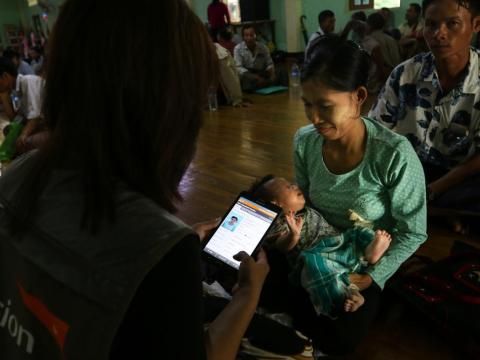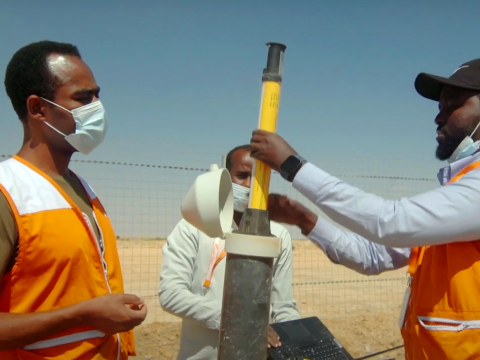
Inculcating a Culture of Innovation in the Development Sector
On World Creativity and Innovation Day #WCID #InnovationDay, Dan Mtonga says that given AI and other technologies, business as usual is not sustainable for humanitarian agencies.
Necessity is the mother of invention: People faced with seemingly insurmountable obstacles have an incredible capacity for innovation. In the development sector, we see this every day in our communities. The poor and underprivileged, with precious little access to capital or services, survive some of the harshest conditions through sheer ingenuity. But it doesn’t have to be like this.
The challenge for those of us working in development is to empower communities to live happier, healthier, fuller lives with urgency and opportunity; to create sustainable structures that enable people to build their own futures. That means embracing the necessity of invention and reimagining how we work.
On World Creativity & Innovation Day on 21 April, I was reflecting on how World Vision is innovating to better support disadvantaged children and communities.
Pioneering digitalization from internal procedures to project implementation1
Digitalization is transforming sectors and industries across the world. Big Data, Artificial Intelligence (AI), and automation are making government and private enterprise more time-efficient and cost-effective. These innovations allow organizations to better predict trends, better focus resources, and better deliver outcomes. This is the spirit we need to embody if we are to have a greater impact on underprivileged children and marginalized communities.
Here at World Vision, we are pioneering digital innovation at a global level, building the digital literacy of our teams in information management, data governance, and digital rights. For instance, our Geographic Information System (GIS) gives us the ability to visualize, analyze, and interpret data to track the trends, relationships, and patterns that might otherwise be harder to follow.
This has real-life implications. Following natural disasters, a data desert can hinder humanitarian assistance, stakeholder communication, and project interventions. However, up-to-date information enables us to better anticipate emerging health issues, population needs, and environmental challenges. In doing so, we are able to act sooner and implement specific actions more tailored to local circumstances.
Meanwhile, our Last Mile Mobile Solution (LMMS) focuses on the crucial final stage of delivering humanitarian aid. Communities in remote, rural, or mountainous areas are tough to reach even at the best of times. The conditions in which these communities live can make it difficult to track where aid ends up. Following a natural disaster, this can be close to impossible. For this reason, NGOs have often struggled to provide accurate reports on the impact of individual donations. This can undermine trust in humanitarian work. However, thanks to LMMS, World Vision is able to provide granular detail about where our donations go and the impact that our donors have. In doing so, we are able to show that every cent counts and, therefore, give donors greater confidence in our work.
Likewise, our Non-food Item Tracking System (NTS) ensures that World Vision aid can be monitored throughout its journey: from procurement to logistics and from warehousing to distribution. First introduced in the Philippines and rolled out across the world after the 2015 earthquake in Nepal, NTS enables us to track aid and respond more quickly to emergencies, giving our teams on the ground the materials they need to support at-risk communities.
Using digitalization to improve our processes
World Vision aims to embed innovation throughout all our procedures, activities, and interventions. Recognizing that digital transformation is essential to operational efficiency, over the next five years, we aim to digitalize all our programming, monitoring, response, and survey processes.
In particular, World Vision will create a single database of people who benefit from each of our programmes. We will also build a new platform to automate the collection, consolidation, and presentation of our data across interventions and activities. This will give us more robust data. That, in turn, will enable us to make better, more targeted decisions on how, when, and where we implement our interventions. It will also better highlight which activities are having the greatest impact.
Cultivating a culture of innovation in development
Innovation cannot happen in isolation. To become embedded across an organization, it needs to be inculcated through a culture of continuous improvement. Culture comes from the top. So, organizational leaders have a crucial role to model, teach, and preach a culture in which innovation is promoted and where best practice is scaled up and rolled out. That means encouraging staff to pioneer new ideas, to be curious about new solutions, and to be enthusiastic evangelists for new technologies.
In short: Business as usual is not a sustainable solution. The world continues to change - whether because of the climate crisis, global conflict, or new technologies. And we need to change with it. This means changing our methods and embracing new solutions to deliver lasting change for the children and communities for whom we work.
Dan Mtonga is Programme Quality and Impact Director for World Vision East Asia Regional Office.


